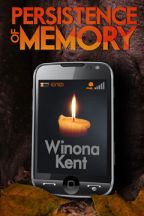
Laughter disarms the fiercest of men. – Lokabrenna
A child’s fascination with something can last a long time and spark great ideas; ideas that can be turned into books. As a little girl, Joanne Harris found Thunder of the Gods by Dorothy G. Hosford in her local library. She loved the book so much that her name kept appearing on the lending card inside it. She even got hold of it after so many years, but you’ll need to ask her yourself how she managed that – maybe she is a trickster too. This book triggered in her the fascination with mythology and I’m very happy she found it, because her books inspired by Norse mythology are brilliant. I love Runemarks and Runelight and I was very excited to hear that she wrote another book set in the Norse lands of myths and legends.
The Gospel of Loki is a story told by the Trickster himself. The story starts with Loki meeting Odin and ends with Ragnarók. Loki, who is a very mercurial creature in body and mind, tells us about his adventures on the way to becoming a god, as he was promised. His new ‘relatives’ do not warm up to him straight away – Aesir and Vanir are either careful or biased towards his shift(y)-ing personality. It is never easy for him and Loki keeps trying to win them in his naturally charming way. He tricks, lies, he fights or causes fights, he is a hero and a fool, a friend, lover and a foe all in one. He has his family too – yet Loki’s heart is imprisoned in barbed wire. There might be more to the story than he tells us.
The book is divided into four parts (Light, Shadow, Sunset and Twilight) – a giant loop, out of the Chaos throughout light, into the shadows until Ragnarók and back to the Chaos. Each of the parts contains tales spiked with Loki’s lessons for his readers. Being the Trickster extraordinaire, Loki easily can spot someone trying to deceive him, or so he likes to think. He gets too entwined in the web of conspiracies and his role in all that, yet he doesn’t mind getting his hands dirty. He might be the ultimate flawed character, because of his moral compass rapidly changing directions to suit his causes, but he proves to be a hero or anti-hero that has his own side of the story to tell. He might not become a god but he definitely is a luciferous light amongst the gods of Asgard – or it might be just his flame coloured hair. And it’s an astounding story of ups and downs of the Nine Worlds full of runic magic and incredible creatures.
The Gospel of Loki, besides such a great narrator, has lots of different characters. The gods as a pompous crowd – full of all they are known for but not as bright as the gold they would do anything for (maybe with some exceptions here and there). Odin knows how important is the art of PR or gossip and rumours which become true just because he says so. Bragi and his lute might be a part of this lyrical marketing campaign. Balder the “Goldie locks” is just as shiny as Heimdall, and Loki doesn’t seem to be a fan of the precious ones. Freya, the Machiavellian goddess, Thor the Thunderer, Frigg the Seeress and the rest of them fall for Loki’s tricks and they don’t like it, but they owe him on many occasions when his creative problem-solving saves the day.
There is also an undesirable crowd, a vibrant lot that makes the Trickster’s stories more fascinating. He has a soft spot for witches and his relationships with them bear a truly demonic fruit. I love Fenris, Hel and Jormungand – Loki’s misunderstood children. Throughout the whole book, Loki wonders why he was chosen by Odin to join him and the other gods. He knows his value but doesn’t clearly see how it all fits into the bigger picture. Eventually he gets lost a little bit and might end up being served his own trickery which doesn’t taste as nice as jam tarts baked by his wife, Sigyn. Is it possible that the Trickster was ultimately tricked or did the Oracle simply not like him?
The Gospel of Loki is a very faithful account of Norse myths, which are great the way they have been told and re-told, but I think that making Loki the narrator of them, with his goofy humour and the air of superior trickery mastermind, Joanne Harris re-wrote them in a brilliant way. Even though she is so close to the original material and she wrote it in more or less chronological order to enable Loki to tell his story, her quirky and marvellous storytelling is present on every page of this book.
I have known the myths since I was a child too and mythologies have always been fascinating. This book gives me a fresh glimpse into the story of one of the most incredible characters of Norse mythology. It’s not only a melancholic narration of the ever misunderstood Trickster, but also an entertaining story skilfully written as if it was simply told by Loki himself sitting right next to the reader.
Author: Joanne M. Harris
Title: The Gospel of Loki
Publisher: Gollancz (UK)
Format: Hardback
Published: February 13, 2014
Review originally published on Fantasy-Faction website.






























